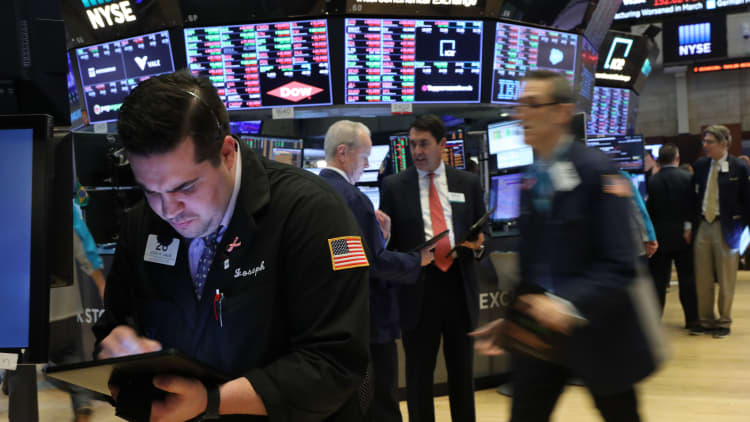
Stocks rose on Thursday as trade talks between China and the U.S. restarted, but fears that the economy may be slowing down persisted.
The Dow Jones Industrial Average rose 91.87 points to 25,717.46 as shares of Nike and J.P. Morgan Chase outperformed. The gained 0.4 percent to 2,815.44. The broad index is also headed for its best first-quarter performance since 1998, rising 12.3 percent. The Nasdaq Composite advanced 0.3 percent to close at 7,669.17.
Financials and consumer discretionary were among the best-performing sectors in the S&P 500, rising 0.8 percent and 0.6 percent, respectively. PVH Corp. outperformed all stocks in the broader index, surging 14.8 percent on strong earnings. J.P. Morgan Chase, Citigroup and Bank of America all rose more than 1 percent, boosted by higher Treasury yields.
Reuters reported overnight that Chinese officials made unprecedented offers regarding force technology transfers as well as other major sticking points. The report comes as U.S. Trade Representative Robert Lighthizer and Treasury Secretary Steven Mnuchin arrived in Beijing for further negotiations.
"Still, the ongoing debate over China and the negotiations is out there," said Phil Blancato, CEO of Ladenburg Thalmann Asset Management. "I don't see a lot more upside to the trade negotiations."
"I think the bulk is already priced in."
Trade between China and the U.S. has been a key issue for Wall Street as investors fear a prolonged standoff between the world's largest economies could hinder corporate profits and economic growth.
"The talks will conclude. They have to," Max Baucus, former U.S. ambassador to China, told CNBC's Martin Soong at the Boao Forum for Asia in the Hainan province of China. "U.S, China, we're so closely joined at the hip economically, we got to get this thing done."
Negotiations between the two countries continue amid growing concern of an economic slowdown as the bond market flashes signals that a recession could come soon.
The closely watched 10-year Treasury rate hit its lowest level since December of 2017. This comes after the same bond fell below its three-month counterpart last week — a phenomenon described as inverted yield curve. This is usually perceived as a sign that a recession could be about to erupt.
"Thus far it is a strange type of inversion, dominated by the front-end and belly of the curve with the long end very much following in its wake," said Michael Shaoul, chairman and CEO of Marketfield Asset Management, in a note. "The current curve is consistent with the market pricing in a slight reduction in the policy rate in late 2019 or early 2020 and for inflation pressures to remain rooted around the current level."
The 10-year rate recovered some ground on Thursday, however, trading at 2.388 percent.
In economic news, the U.S. economy grew by 2.2 percent in the fourth quarter, according to the government's final read released Thursday.
—CNBC's Silvia Amaro contributed to this report.


